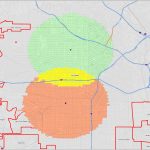 Egohoods are an overlapping approach to constructing neighborhoods—whereas almost all other approaches to constructing neighborhoods utilize a non-overlapping approach (neighborhoods do not overlap with one another), egohoods take an explicitly spatial approach to measuring context.
Egohoods are an overlapping approach to constructing neighborhoods—whereas almost all other approaches to constructing neighborhoods utilize a non-overlapping approach (neighborhoods do not overlap with one another), egohoods take an explicitly spatial approach to measuring context.
Egohoods were developed by Dr. Hipp and Dr. Boessen in 2013 and published by the journal Criminology. The paper citation and download is located below.
Abstract
Defining “neighborhoods” is a bedeviling challenge faced by all stud- ies of neighborhood effects and ecological models of social processes. Although scholars frequently lament the inadequacies of the various ex- isting definitions of “neighborhood,” we argue that previous strategies relying on nonoverlapping boundaries such as block groups and tracts are fundamentally flawed. The approach taken here instead builds on insights of the mental mapping literature, the social networks literature, the daily activities pattern literature, and the travel to crime literature to propose a new definition of neighborhoods: egohoods. These egohoods are conceptualized as waves washing across the surface of cities, as op- posed to independent units with nonoverlapping boundaries. This ap- proach is illustrated using crime data from nine cities: Buffalo, Chicago, Cincinnati, Cleveland, Dallas, Los Angeles, Sacramento, St. Louis, and Tucson. The results show that measures aggregated to our egohoods explain more of the variation in crime across the social environment than do models with measures aggregated to block groups or tracts. The results also suggest that measuring inequality in egohoods provides dramatically stronger positive effects on crime rates than when using the nonoverlapping boundary approach, highlighting the important new in- sights that can be obtained by using our egohood approach.